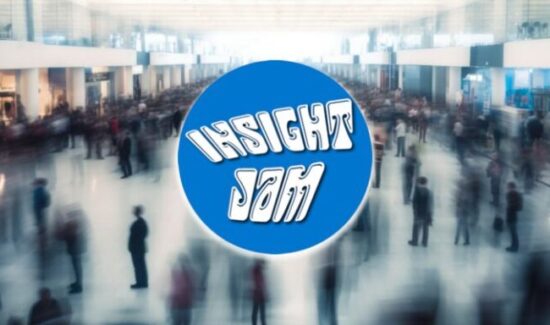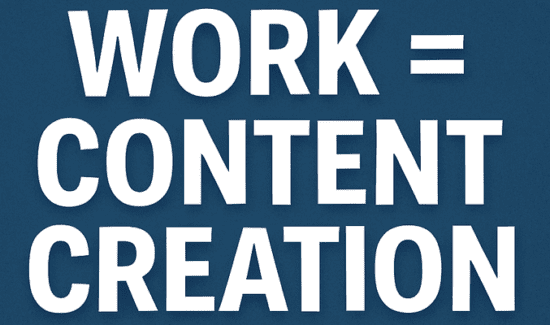Storytelling in the Age of AI: Is Promptism Replacing Post Modernism?

ERA-co’s Paolo Testolini offers commentary on storytelling in the age of AI and how people can reclaim meaning, emotion, and imagination in a world of infinite prompts. This article originally appeared in Insight Jam, an enterprise IT community that enables human conversation on AI.
From the cave walls of early human history to the digital screens of today, art has always evolved in response to the tools, ideas, and crises of its time. Each movement — from Classicism to Romanticism, Modernism to Postmodernism — was never just about aesthetics. These “-isms” were reflections of how artists saw the world, their place in it, and how they chose to translate emotion, power, truth, or doubt into form.
Today, in the wake of artificial intelligence’s rapid integration into creative life, a new force is emerging — one that reshapes how art is made, who makes it, and what it means to create at all. This new force, still in its infancy but growing fast, is something we might call promptism.
Promptism is the act of creating visual (or audio, or textual) work through linguistic input — prompts — fed into AI systems like DALL·E, Midjourney, Stable Diffusion, or ChatGPT. The results can be stunning, surreal, conceptually rich, or instantly forgettable. With a single phrase, one can now generate a painting, a character design, or an entire speculative world in seconds.
But promptism isn’t just a new tool. It’s becoming something deeper. It’s a shift in creative consciousness — and potentially, the first true “-ism” of the AI era. Yet for it to matter, to endure, and to move us, it must be anchored in storytelling.
A New Movement with Ancient Echoes
To understand promptism’s place in art history, it helps to look back.
Classicism, born from the ideals of ancient Greece and Rome, was rooted in harmony, order, proportion, and reason. It resurfaced time and again whenever cultures sought clarity and structure.
Romanticism rebelled against that structure. It turned inward, embracing emotion, the sublime, and the irrational. Realism grounded itself in the everyday. Impressionism sought to capture the fleeting. And then came the 20th century, with movements like Cubism, Dada, Surrealism, and Abstract Expressionism — all breaking with form, with expectation, with reality itself.
Finally, Postmodernism appeared. Rather than building a new world, it disassembled the old one. It questioned truth, meaning, and originality. It blurred high and low culture. It was witty, self-referential, fragmented — and for a time, that fragmentation reflected the world.
But something has shifted. The age of irony has grown thin. In an era flooded with content, sarcasm has lost its sting. In its place, a hunger has returned — not just for cleverness, but for connection. Not just for style, but for story.
Why Storytelling Matters More Than Ever
Promptism, at its core, is built on language. A prompt is more than a command — it’s a spark, a seed, a suggestion. It’s the beginning of a journey. Yet, without narrative intent, that journey often leads nowhere.
AI can generate image after image, infinite in variation. But without a why, these images remain hollow. They may dazzle, but they rarely stay with us.
Storytelling is what transforms prompt-based creation into art. It’s what moves promptism beyond aesthetics and into meaning. A powerful image paired with a meaningful narrative evokes emotion, memory, and resonance. It doesn’t just look real — it feels true.
In a world overflowing with synthetic visuals, the story becomes the signature. It’s how we know a work was made not just by machine, but with human heart.
The Prompt as Narrative
Think of a prompt not as a query, but as the opening line of a story. “A knight in chrome armor stares into the neon dusk of a ruined Tokyo.” That’s not just a prompt — that’s a world. It invites backstory, character, mood, and mythology. It opens doors.
The best promptists — if we can use that term — are not engineers, but storytellers. They know that the soul of the image lives in the narrative it suggests. They craft prompts not with precision alone, but with poetic sensitivity. They aren’t asking the AI for a picture. They are inviting the machine into a story — one they are still shaping, feeling, exploring.
And this is where Promptism can truly shine. Because unlike the -isms of the past, promptism has no fixed aesthetic. Its style is fluid. Its tools are borrowed. Its rules are still being written.
But its potential lies in one eternal truth: humans are storytelling creatures. We understand the world through narrative — and no amount of pixels or algorithms can replace the emotional intelligence embedded in a well-told story.
The Artist as Storyteller
The artist of the promptist age is not just someone who knows how to use an AI tool. They are someone who knows what they want to say — and why it matters. They’re not technicians; they’re narrative architects.
They guide the AI with language shaped by curiosity, memory, emotion, and imagination. They tell stories not just in words or images, but in experiences — visual, conceptual, and deeply personal.
In this light, promptism becomes less about automation and more about authorship. The artist’s role isn’t diminished — it’s transformed. They are still the origin of meaning. They are the ones who choose, who shape, who storytell.
The Final Turn: A Poetic Reflection
So where does this leave us — in this moment between what art was and what it is becoming?
If a single sentence can conjure a cathedral of light, a face that never lived, a dream no one has ever dreamt — what happens to the silence between the words? Who holds the authorship when the brush never touches the canvas, and yet something still stirs the soul?
Are we still artists, or have we become something else entirely — narrators of possibility, architects of suggestion, whisperers to the machine?
What does it mean to create when the act of making becomes an act of asking?
When AI offers us a thousand visions in return, how do we choose which one truly belongs to us?
Can we still speak of originality when our tools know more images than we do — or does originality now live in the story we’re trying to tell?
And above all:
- Can promptism become more than spectacle?
- Can it carry weight, memory, truth?
- Can it love, can it grieve, can it wonder?
- Perhaps it’s not about replacing the old -isms after all.
- Perhaps it’s about returning to the oldest questions, but with new instruments.
- Not what is art, but why do we need it?
Because in the end, when the algorithms fall silent, and the screens go dark — will there still be a voice that says: “This is who we were. This is how we saw. This is what we longed for.”
And if that voice still exists — then art, in any form, still lives.



